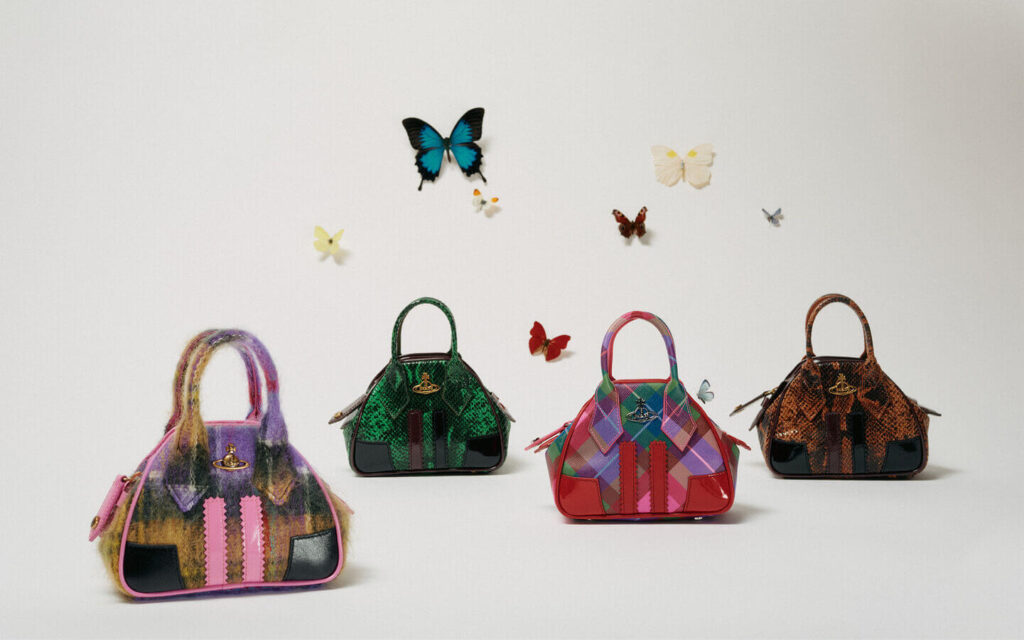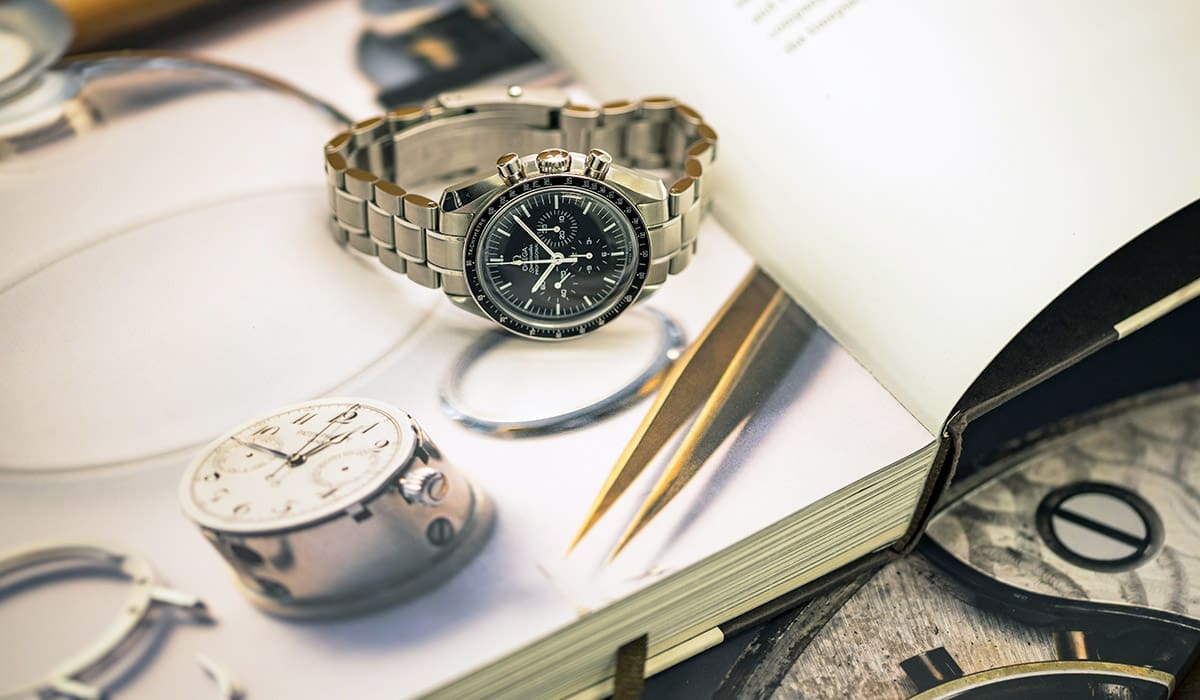LONDON — Burberry’s first live fashion show in two years was also the 111th show that its chief creative officer Riccardo Tisci has staged in his 20-plus years in fashion. The angel number 111 is believed to symbolise new beginnings. In the past year, Tisci has lost his cherished mother and weathered several bouts of Covid-19. No wonder he mentioned feeling “uncaged” when we sat down to talk on Monday. It’s definitely time for a new cycle. “Though it feels like the first one every time,” he insisted.
It’s taken Tisci four years to feel truly confident at Burberry. “To get another big fashion house in another country is one thing,” said Tisci, who is Italian. “But going into a real heritage house to make fashion is something else. To get Burberry, you’re touching something that is very strong. And such a big company takes time. You have to be careful not to go to one side or the other. Good or bad, after those three years, I know what people want to see. Beginning with the trench, the car coat, the checks, now you can buy trainers, eveningwear, a cocktail dress, suits for women and men, bags… it becomes like a lifestyle.”
As an expression of his self-belief, Tisci’s latest presentation was peerless. The London Contemporary Orchestra, plus full choir, played the music of fashion’s favourite soundtrackist Max Richter in the soaring interior of the Methodist Central Hall in Westminster. Models paraded ceremonially down an imposing staircase and on to the floor where the audience stood around formally laid tables.
“Democracy — everyone standing,” Tisci explained. He thought the table was such an integral part of British culture — central to breakfast, teatime, supper — that when his models walked onto the tables, it felt vaguely transgressive, a reaction he’s always courted. It was also cinematic, like the final scene in “Darling,” the ultimate Swinging London movie, where bored, blonde model Julie Christie, all dressed up with nowhere to go, walks a runway-long dining table in a desperate effort to arouse her Italian aristocrat husband. A British beauty, an Italian man, a last gasp of decadence… Tisci had never heard of the movie, but the scenario was enough to strike a familiar chord.
:quality(70)/cloudfront-eu-central-1.images.arcpublishing.com/businessoffashion/ZIGYVCRLKNH4JGIDYCUMYPWDHQ.jpg)
Tisci emphasised Burberry’s “Britishness” over and over. “It’s much more than a heritage and a fantastic narrative, it represents what England is as a style,” he insisted. Somewhere between the Royal and the Rebel, in his mind. He set about deconstructing and reconstructing everything: the trench, the car coat, the Harrington, all the uniforms, all the street tribes. The Burberry knight appeared without his horse, the horse without his rider. “So much to play with,” Tisci enthused, “and it’s easier for me because I’m not English to really play with what I see, what I feel.”
Is “Britishness” still so important? I wondered. It may be a tough time to trade on Britishness. My gut says Brand Britain has been tarnished by Brexit, Boris Johnson and Andrew Windsor. Tisci would say my gut is wrong. His latest collection referenced another side of Britishness entirely. “Maybe a British person would see it a different way, but I’m Italian so for me this collection was very British. It’s celebrating amazing modern and beautiful style. Strong men and women. Leigh Bowery. Kate Bush. Vivienne Westwood. She changed the world of fashion for everybody. I got obsessed with David Bowie recently. Bowie in the Thierry Mugler skirt on Saturday Night Live with Klaus Nomi.” That was apparently a starting point for the menswear Tisci showed. “I didn’t want to make a caricature of the classic Savile Row gentleman. I wanted to make it modern, new on the eyes.”
But it’s actually the past he most respects about Britishness. And yes, there were shades of history in the show. For the men, there were echoes of the workwear of farmhands, the red of cavalry jackets, the long coats and waders of lifeboatmen, and hoods that looked more like Quaker bonnets. And for the women? Tisci insisted British women surprise him. He loves what he sees as an innately rebellious streak: his dear friend, the late Stella Tennant in an evening dress with flip flops and a car coat, or her grandmother, the Duchess of Devonshire, feeding her chickens in an opera coat. “You didn’t see those women in Italy,” he muses. “They didn’t have the modernity to dress down.” He called the attitude “punk.”
But the waywardness of that notion didn’t translate into his own womenswear whose precision and discipline brooked no British eccentricity. It was, however, “powerful, classic, severe, but sexy,” just as Tisci described the women he imagined wearing it. And it made something else quite clear. It’s less “Britishness” and more “Tisci-ness” that shapes Burberry now. The classic Burberry tropes — beige trench, quilted jacket — were transmogrified here into couture gowns. And if Burberry womenswear often had something of the 1940s under former chief creative officer Christopher Bailey, Tisci has hardened the edges with his own precise version of that decade’s film noir glamour.
When Tisci said, “For me, the biggest achievement of the show was the fact to make a fashion show with real fashion design for a company like Burberry,” he was reflecting the business strategy put in place by former CEO Marco Gobbetti, who hired Tisci in 2018 to help re-energise the British trench coat maker and reposition it further upmarket. (The pair did wonders to rev up LVMH’s Givenchy in the mid-noughties).
That meant higher prices and tighter distribution, as well as a refreshed set of brand signifiers, including a new logo and monogram, and investment in ready-to-wear and leather goods. The birch brown check, which started small in accessories, has attracted a new fashion client and is now generating as much in sales as the classic check, said Tisci. “It’s a big company to move, but now I feel the boat is in the water.”
But Gobbetti left for Salvatore Ferragamo in January, leaving Burberry’s turnaround only partially complete. Its ambitions to become a British Louis Vuitton are still very much a work in progress, and the house is lagging luxury market leaders in its pandemic recovery.
His successor Jonathan Akeroyd starts next week after six years at Versace and, before that, McQueen. Tisci has connections with both brands. A farrago of pre-Burberry industry gossip had him headed Donatella-wards at one point. Katy England, Lee McQueen’s right hand, has filled the same function for Tisci at Burberry, though the stylists for the latest show were Ib Kamara and Ana Steiner. And, of course, Tisci succeeded McQueen at Givenchy.
But there was a sturm und drang to Tisci’s Givenchy. Burberry feels so much cooler, more mature. “More luxury,” he interjects. If his early shows for Burberry were unwieldy, overwrought mash-ups of street and salon, compartmentalisation has liberated the luxury. “That’s why they called me,” he said. “I’ve been playing with luxury in the past. Burberry was a good company, but now we’re next to all the big names, Chanel, Vuitton, Gucci. That is very important.” A huge new flagship has just opened on Rue St Honoré’s golden mile in Paris. That’s important too.
The day before his London extravaganza, Tisci launched his collaboration with Supreme, to the typically riotous response — literally in this case — that greets most of the streetwear juggernaut’s collabs. “People were waiting, because I used to be famous for collaborations,” said Tisci. “And everyone asked me why this time, to be very honest. Eight years ago, I was one of the first prêt-à-porter designers that did Nike, same time as Comme des Garçons. I did a lot of collaborations at the time so I didn’t want to do one more. The marketing people were, like why? I said, it’s got to come at the right moment. I was ready for Supreme. First, you fix your house before you invite people for dinner. And it was good to launch this week because the collection was so couture, and then you have the reality, the street, the rebellion.”
And it’s still to the street that he turns for a tune-up. Tisci describes his life in London as “very simple, a lot of sport, a lot of work, a lot of walks in the park. But every weekend, I’m trying to see what’s new, what’s next. A lot of underground things happen in London. I’ll go out a lot to raves. People ask why I’m going to clubs. First, I love music. Then to see kids. I’ve seen so many movies in my life, so many museums, I’m 47 and I know what art I like. But the emotion of the young generation is what attracts me and keeps me fresh. I go to Adonis, this beautiful night where kids are pulling looks that are insane.”
Tisci has always been immersed in subcultures. They’ve frequently shown up on his catwalks. In 2010, he caused a furore when he put Lea T, a black trans woman from Brazil, in a campaign for Givenchy. “To be honest, LVMH supported me a lot,” he said. More recently, the Brazilian artist-activist Jota Mombaça showed up in a Burberry lookbook. “Throughout my career, I’ve tried to bring people from the outside inside. When we were first talking about racism, homophobia, transphobia, there were just a few others talking. The fashion industry was very racist at the time. I was criticised. Now every house uses black women, trans women. It’s a big conversation. It’s changing slowly, but it’s changing.”
No one left outside: the man is making amends to the boy who was bullied as a child, always left out. “When I was successful, I was like, you’re coming and you’re coming. I’ve been trying to help others since my young days.” And he believes in karma. He tells a story about his show for Givenchy in New York on the 14th anniversary of 9/11, on a day when the rains came… and came. The show was at 6pm, and there were calls to cancel it. But just before 4pm, the rain stopped, the sun came out. “Riccardo Tisci put Jesus Christ’s face on so many T-shirts that he returned the favour and made the rain stop,” said friend Marina Abramović.
That was Gothic Tisci, saturated in penumbral Catholicism. Earlier in his career, the Goth label was a cross he had to bear. It was particular anguishing for Karl Lagerfeld, one of his early boosters in Paris. “I don’t understand why they’re writing this,” Tisci remembers him wailing one night, “I’m going to call Anna.” Then, despite Tisci’s assurances that he really wasn’t bothered, Lagerfeld leaned in with his unsolicited wisdom. “I have a suggestion. Stop using the word Gothic.” Tisci didn’t, and he bore the brunt of pre- and mis-conceptions until Gothicism bedded in as a trend. “My mum said, sit down and wait. Don’t be the one that passes by. Watch the others, let them pass by.”
Maybe the darkness has never really gone away, though he preferred to think of his new Burberry collection as more mysterious than dark. “My darker side was much more English,” Tisci reflected. “I always had a problem when I started because people didn’t believe I was Italian. I was 17 when I came to England, and Central Saint Martins completely took my virginity, opened up my creativity. Then I went to France and learned the craft of couture. My style has always been very different from the classic Italian designer, more aggressive. Not in a bad way, but Italians have this set culture. There’s amazing design in Italy but there’s never been a Mugler or a Gaultier or a Margiela or a McQueen or a Galliano. I probably could belong more to England — or France.”
His mother Elmirinda died six months ago. She was 93, and she was his inspiration. “We rang each other ten times a day. I was preparing myself for many years, I knew it was going to happen. She died as a queen, beautiful with makeup, no suffering. But after six months, I still reach for the phone to call her when I wake up.”
Elmirinda always hoped her only son (there are eight older sisters) would have a child. And now it’s what Tisci wants most as well. “My son or my daughter will have eight mothers,” he said drolly. That might be the greatest measure of the change in him in recent years. “I was scared
to be an adult,” he admitted. “Always been a Peter Pan. My life never let me be a child. After my father died, I was working at eight years old. I was the man of the family, the father of everybody, the husband of my mum. So I never really had time to be a kid, and that’s where my dreams, my craziness came from later on. Today I feel I’m a quiet child, a mature man.”
And Riccardo Tisci is telling the world with his Burberry.





More Stories
Top 10 Cakes Ideas that you must try out – Designs for life
Whites’s IGA officially unveils sixth store at Forest Glen Village Centre
Labor and Material Cost Increases: Planning for your Small Business in 2022